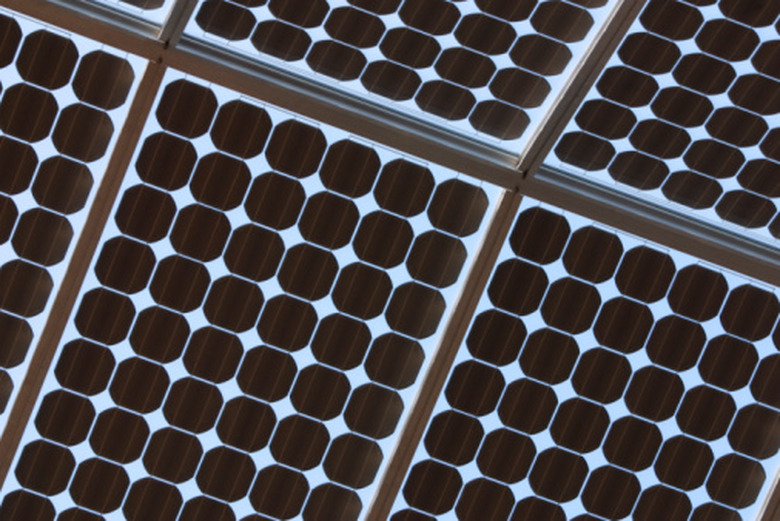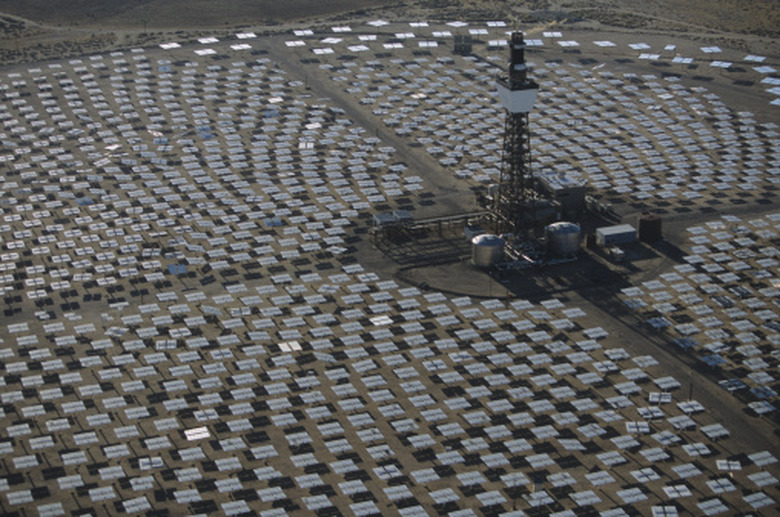What Is The Difference Between Thermal Energy & Solar Energy?
Solar energy comes from the sun. It drives the weather and feeds plants on Earth. In more specialized terms, solar energy refers to the technology that allows people to convert and use the energy of the sun for human activities. Part of the sun's energy is thermal, meaning it is present in the form of heat. Some approaches to solar power convert the sun's energy to heat, but for other approaches heat does not help at all. There are also other definitions of thermal energy that have nothing at all to do with the sun.
Thermal Energy
Thermal Energy
The word "thermal" derives from the Greek word for heat, so thermal energy is technically heat. When engineers talk about thermal energy it is usually a bad thing — waste. For example, an incandescent light bulb puts out light, but it actually puts out more heat than light. When your laptop computer warms your lap, that does nothing to help you do calculations — it is wasted energy. This wasted energy is almost everywhere — car engines, cellphones, televisions. This form of thermal energy has nothing to do with the sun.
Geothermal Energy
Geothermal Energy
Underneath the surface of the Earth lie pools of molten rock. That superheated rock carries a large amount of energy, and geothermal energy attempts to extract that energy and convert it to useful forms. Specifically, the most common form of geothermal energy sends a liquid down into the Earth, lets it interact with hot rock and pulls the heated liquid back to the surface. That heat is used to drive a turbine, producing kilowatts of electricity. Although this is a good form of thermal energy, the ultimate source of this heat is radioactive materials within the Earth's core, which has nothing to do with the sun.
Solar Energy
Solar Energy
There are two general approaches to extracting energy from sunlight. The first approach is called photovoltaic. In the photovoltaic approach, sunlight is captured in a semiconductor material and the semiconductor puts that energy right into its electrons. When the electrons are pulled out and sent through a circuit, they directly provide electrical energy. As long as the sun shines, the electricity comes out. Most solar panels work better when they are cooler — so when they collect too much of the sun's thermal energy, it is a problem. This is solar energy that is not thermal energy.
Solar Thermal
Solar Thermal
The other approach to extracting energy from sunlight is solar thermal. With solar thermal, sunlight is used to heat up a liquid. This is done either by running pipes centered above long rows of parabolic trough mirrors that focus sunlight on the pipes, or by pointing an entire field of mirrors at a big tank. In this approach the whole idea is to use as much of the sun's energy as possible, converting it to heat. In both approaches, the liquid within the containers heats up and is then used to directly or indirectly drive a turbine to produce electricity. With careful design, a solar thermal plant will keep the liquid hot enough to produce electricity for several hours after the sun goes down. This is a case where the thermal energy is all produced by the sun — meaning that thermal energy and solar energy, in this case, are exactly the same thing.
Cite This Article
MLA
Gaughan, Richard. "What Is The Difference Between Thermal Energy & Solar Energy?" sciencing.com, https://www.sciencing.com/difference-thermal-energy-solar-energy-8503416/. 24 April 2017.
APA
Gaughan, Richard. (2017, April 24). What Is The Difference Between Thermal Energy & Solar Energy?. sciencing.com. Retrieved from https://www.sciencing.com/difference-thermal-energy-solar-energy-8503416/
Chicago
Gaughan, Richard. What Is The Difference Between Thermal Energy & Solar Energy? last modified March 24, 2022. https://www.sciencing.com/difference-thermal-energy-solar-energy-8503416/




